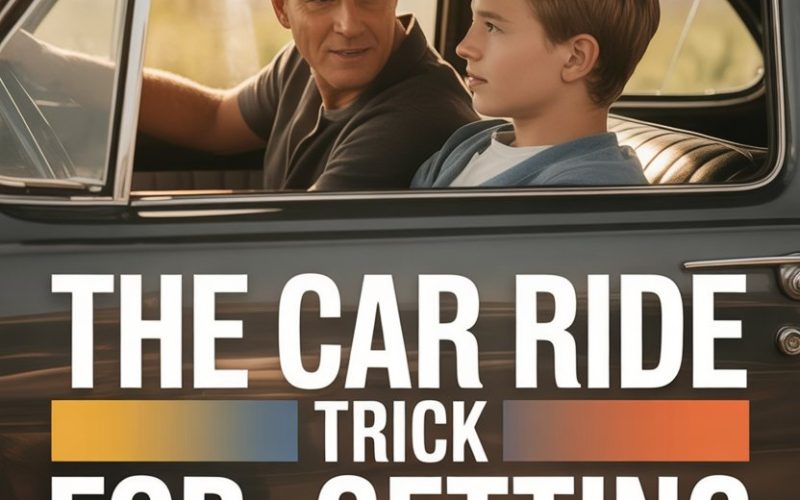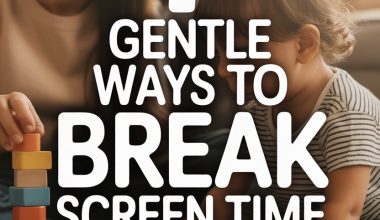Wishing your son would spill his thoughts without you having to bribe him with screen time or pizza? You’re not alone.
For many parents, cracking the code of a boy’s inner world feels like trying to decipher ancient runes—blindfolded, and possibly underwater.
But there’s a time-tested, surprisingly simple trick that works like magic for many families: those minutes together in the car.
No, it’s not just about cranking up the radio and hoping for the best.
There’s real science, and plenty of good stories, behind why boys tend to open up somewhere between the backseat and the petrol station.
Why Conversations Happen in the Car
You know that moment when you’re both staring at the windscreen, hands on the wheel, and the silence feels…comfortable? Cars have a unique knack for turning grumpy kids into actual conversationalists.
Experts, including psychologist Dr. Michael Thompson, agree that “side-by-side” environments (like riding in a car) lower the stakes for kids.
Eye contact is less intense, the pressure to perform evaporates, and—let’s be honest—they’re trapped for the duration of the trip.
It’s not just anecdotal. Research from the University of California, Los Angeles supports the idea that less direct confrontation, such as side-by-side chats, creates a safer, more relaxed space for boys in particular to open up about what’s on their minds.
The Science of Side-by-Side
Let’s talk brain wiring (without sounding like your Year 9 biology teacher). Boys’ brains often process emotion and speech a little differently than girls’.
Many males find it easier to talk about tough stuff when they aren’t being stared at like a rare zoo animal.
A study from Cambridge University found that boys respond better to conversations that don’t feel like interrogations. Give them a neutral zone, and you might just be surprised by how much you hear.
Plus, there’s an accidental genius in car rides. You’re both facing forward. The radio or passing scenery provides a natural breather. And, crucially, there’s a built-in time limit—no marathon heart-to-hearts required.
Timing is Everything
Not all car rides are created equal. The morning rush to school while you’re coaxing a piece of toast into their hand doesn’t count (unless you enjoy monosyllabic grunting).
The golden window? Late afternoons or evenings, especially after sports, music lessons, or a long day of being around other people’s expectations.
If you’re carpooling with a sibling who’s known for theatrical retellings of their day (“And then Mrs. Turner said…”), you might want to engineer a solo trip for just you and your son.
You’ll get far more than a “fine” or “nothing much” if you catch him when the world is quieter.
Questions That Actually Get Answers
“Did you have a good day?” is the conversational equivalent of serving plain crackers at a dinner party. Instead, try something a bit more specific. For example:
- “What was the funniest thing that happened at school?”
- “If you could swap places with any teacher for a day, who would it be and why?”
- “Was there a part of the day you wished you could do over?”
Not every prompt will yield an Oscar-worthy monologue, but open-ended questions help keep the chat from shutting down before it even starts.
Psychologist Dr. Adam Grant suggests opting for questions that invite storytelling, not just short answers. Boys, in particular, may need a little nudge to move beyond yes-or-no territory.
Don’t be discouraged if the first attempt falls flat; persistence is part of the magic.
The Power of Silence
Here’s a secret: silence in the car isn’t your enemy. It’s your wingman. Say something, then just…wait.
The temptation to fill every quiet moment with another question or gentle nudge can be strong, especially if you’re a natural chatterbox. But silence gives kids time to process, and many boys need that extra beat (or five) to gather their thoughts.
You might feel awkward, but those few seconds could turn the tide. Resist the urge to rescue the conversation. Go on, count the sheep. He’ll talk when he’s ready.
No Pressure, No Problem
An important caveat—car rides are not the Spanish Inquisition. Avoid peppering with rapid-fire questions, or worse, launching into life lectures.
Boys, especially as they slide into adolescence, can spot a “lesson” coming from twenty paces.
If you’re genuinely interested and ask with no strings attached, magic happens. Keep it light. Share a goofy story from your own day, or make a comment about something you see out the window.
Show you’re human, not just The Parent Figure Who Asks Things.
When to Let Them Lead
Sometimes, the best conversations aren’t about what you want to discuss. They’re about what’s rattling around in your son’s head—video game strategies, a weird science fact, why everyone is obsessed with that one annoying meme. Indulge him.
Even the most mundane topics can be the opening act to something deeper.
When you let him steer the chat, you’re not just picking up random trivia. You’re building trust.
The more he knows you’ll listen (even to the play-by-play of last night’s football match), the more likely he’ll come to you when something big’s on his mind.
Tech Etiquette in the Car
Backseat screens and Bluetooth playlists are modern miracles—but they can also be conversation killers. If you’re hoping for a chat, try to make car rides a tech-light zone from time to time.
Frame it as a special treat: “Let’s save the playlist for the way home and chat for a bit now.”
When you model this yourself (no urgent scrolling at every red light), your odds of engagement skyrocket. If all else fails, challenge him to a sing-off with the radio. Nobody can resist the sweet siren call of a power ballad, after all.
Why This Works For Older Boys, Too
Teenagers are supposed to be mysterious, right? Not necessarily. The car trick works just as well—sometimes even better—for boys in the throes of adolescence.
Research from Harvard’s School of Public Health found that older kids are more likely to disclose struggles or worries when they don’t feel put on the spot.
A drive to get fish and chips, or a late-night run for milk, provides the perfect “third space.” It isn’t home (where siblings or chores are lurking) and it isn’t school (where everyone’s watching). It’s neutral ground.
If your son’s going through a quiet patch, don’t fret. Boys often open up in short bursts. Be ready when it happens, and don’t make it weird by acting too surprised.
The Car Ride as Family Ritual
There’s something about a ritual that makes even the most ordinary moments feel special. Maybe it’s a regular Friday-night takeaway run, or the “secret” route home after practice.
When your son knows that this is “your time,” it becomes a safe container for whatever needs to be said—or not said.
Some families even have a designated “window roll-down confession time” (not recommended in the middle of a British winter, unless you enjoy hypothermia as a bonding experience).
No need for grand gestures. Consistency is what counts. Even if he shrugs off most of your attempts, he’ll remember those drives as the moments he wasn’t just another passenger.
When to Bring in the Big Topics
Car rides are a sneaky way to broach big subjects—friend drama, worries, the whole birds-and-bees business. The lack of pressure (and eye contact) lets boys process tricky topics without feeling exposed.
If you sense something’s bubbling under the surface, try opening with “I remember a time when I…” instead of “You need to tell me…”. Relatability beats lecturing every single time.
Don’t force heavy conversations, but don’t shy away from them either. If it doesn’t happen this trip, there’s always tomorrow’s school run.
What If He Still Doesn’t Talk?
Some boys are conversational tumbleweeds. You could be chauffeuring Prince William and still get nothing but “yup” and “nah.” It’s not personal; some kids process things internally or aren’t wired for chatty rides.
Don’t give up. The simple act of showing up and being present still sends a powerful message. He may not say much now, but you’re planting seeds for future trust.
And yes, sometimes you’ll be rewarded when you least expect it—at a traffic jam, ages after you’d given up hope.
Turning the Key
Those car rides are more than just transit—they’re a goldmine of connection, if handled with a mix of patience, creativity, and a willingness to accept whatever comes of the conversation (or lack thereof).
Next time you buckle up, try leaving your parental agenda at home and simply enjoy the ride. You might find yourself in the middle of an actual conversation.
Or, at the very least, you’ll have a captive audience for your questionable taste in music.
Either way, the journey is worth it.





